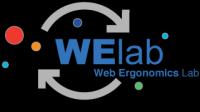Conference,
Web 2.0 and the Semantic Web: Hindrance or Opportunity?
(May 2007)
DOI: http://dx.doi.org/10.1145/1243441
Abstract
The World Wide Web (Web) is in transition; a fundamental evolution of the model which underpins the traditional Web. This new Web, Web 2.0, is a mesh of enhanced semantics, push application widgets, and embedded scripting languages and was developed to pursue the promise of enhanced interactivity. The possible benefits of Web 2.0 are great, but it seems that without timely and prompt action disabled users will be barred from these benefits. Indeed, using sites such as: Flicker, YouTube, MySpace, Google Maps, and Google Portal will rapidly become 'off-limits' to disabled users. Semantic Web technologies have already shown themselves to be useful in addressing some issues of Web Accessibility. However, this new technology has not yet started to make its way into mainstream applications. Without change, will the benefits of the Semantic Web be lost? Will the promising enhanced interactivity of Web 2.0 technologies become increasingly inaccessible to disabled users? We pose the question: "Web 2.0 and the Semantic Web: Hindrance or Opportunity?"
These proceedings bring together a cross section of Web design, engineering and Web accessibility research. The papers included here report on developments on the Web 2.0 and Semantic Web, discuss the issues regarding the evolvement of the Web, and suggest cross-pollinated solutions.
Conventional workshops and conferences on accessibility tend to be single disciplinary in nature. However, we are concerned that this focus on a single participant group prevents the cross-pollination of ideas, needs, and technologies from other related but separate fields. As with the previous workshops, this year's conference is again crossdisciplinary in nature and brings together users, accessibility experts, graphic designers, and technologists from academia and industry to discuss how accessibility can be supported. Our aim is to focus on accessibility by encouraging participation from many disciplines. Views often bridge academia, commerce, and industry and arguments encompass a range of beliefs across the design-accessibility spectrum.

